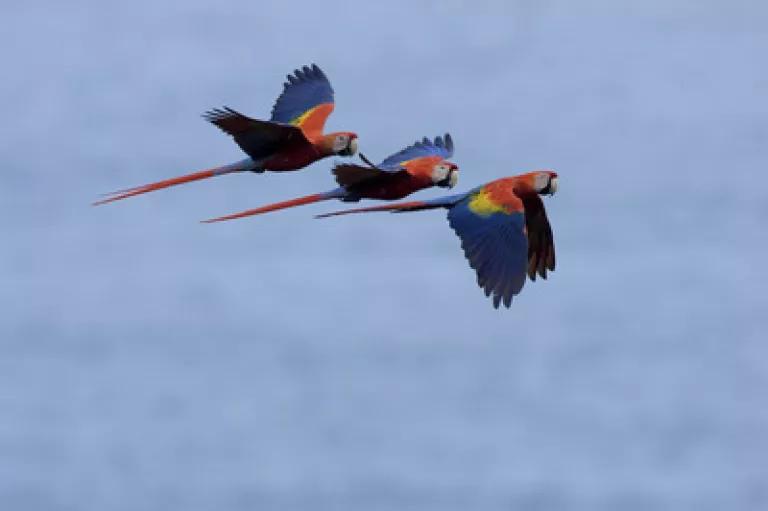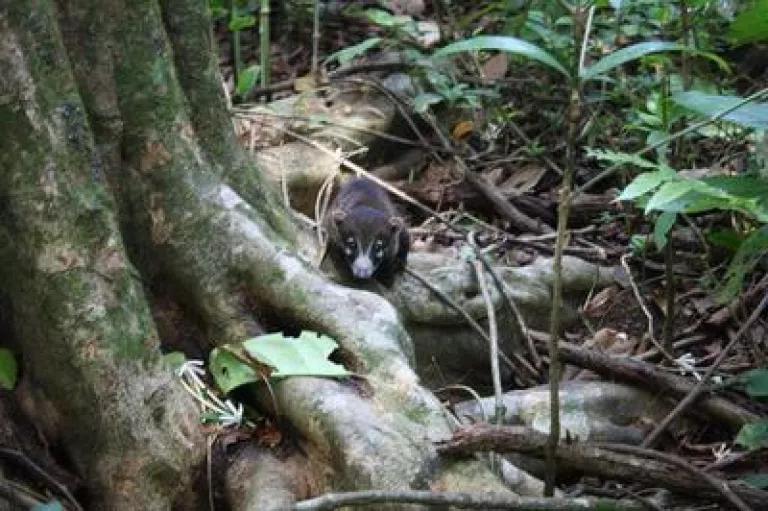
Chestnut-mandibled Toucan
Photo credit: Roy Toft
Many of us may show we care by giving chocolate, flowers and Valentine’s Day cards, but rainforest wildlife have far more colorful rituals that never cease to surprise and amaze. Over the past few years NRDC has partnered with the group Osa Conservation to help Revive a Rainforest on Costa Rica’s Osa Peninsula, one of the most biodiverse places on Earth. With the support of our members we’ve been helping to protect and restore 50 acres of degraded tropical rainforest by planting carefully selected native tree species. Keeping the forest healthy in this way helps provide the Osa’s birdlife, mammals and other wildlife with the security and food they need to thrive so they can continue amazing us with their ingenuity and sheer beauty. Here is just a small selection of how some of the incredible animals that live in Costa Rica’s Osa Peninsula show affection and loyalty:
Giving flowers might be do for us humans, but Chesnut-mandibled Toucans know they need to step it up notch to really shine. A male toucan courting a female will often present her with a whole fruit tree it’s been guarding from intruders and allow her to feed from it or even let her take ownership by moving to a neighboring tree. Once a match is made, toucan couples may spend quite a bit of time together preening each other’s heads and necks since the size and shape of a toucan’s bill limits its ability to preen itself.
The brightly colored Scarlet macaws mate for life and pairs will show affection by licking each other’s faces. Once they’ve found a mate they’re nearly inseparable unless one is watching over the eggs while the other feeds. Scarlet macaw are often seen loudly squawking and feeding together. Or you might get lucky and see them flying accompanied by their young from the large hollow trees where they nest to trees laden with fruits and nuts - a sudden flash of color amidst the rainforest's foliage. Follow this link to see a video of just how loud these boisterous birds can be.

Scarlet Macaw
Photo credit: Roy Toft
In comparison to its toucan and macaw neighbors the Agouti, a short-eared and nearly tailless mammal, has a rather more questionable way of showing affection. Male agoutis will spray the female with urine to attract her attention. But despite this unusual gesture, agoutis partner for life. Throughout their lives agoutis also play a key role in a rainforest’s survival by dispersing seeds far and wide. During times of abundance agoutis will busily gather and bury seeds that they can later retrieve when food is scarce. Eventually some of the seeds that aren’t eaten germinate and grow into trees. Check out this video of an agouti eating and burying some seeds:
Coatis, the largest member of the raccoon family found in Costa Rica, are very social animals and will travel around in groups that can exceed thirty individuals. Over time coati groups will develop very strong and enduring bonds of loyalty. Baby coatis like the one in the picture below are groomed and fed by their mothers and other females in the group as well. If a member of a coati group is attacked, the entire band will launch itself out of the treetops to confuse the attacker. The coatis will work together to fiercely fight off predators so most other animals know to keep well out of their way.

Baby Coati
Photo credit: Manuel Sanchez Mendoza
So if this Valentine's Day you’re looking for a new way to show your loved ones that you care, consider thinking beyond chocolate and candy hearts and instead supporting the Revive a Rainforest effort to keep the Osa home of toucans, macaws, agoutis and coatis wild for years to come.




